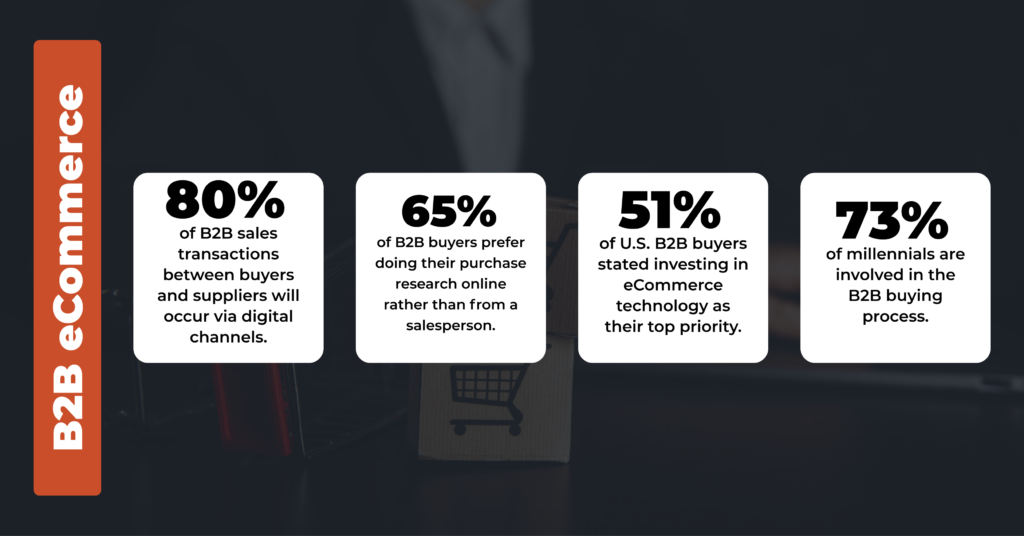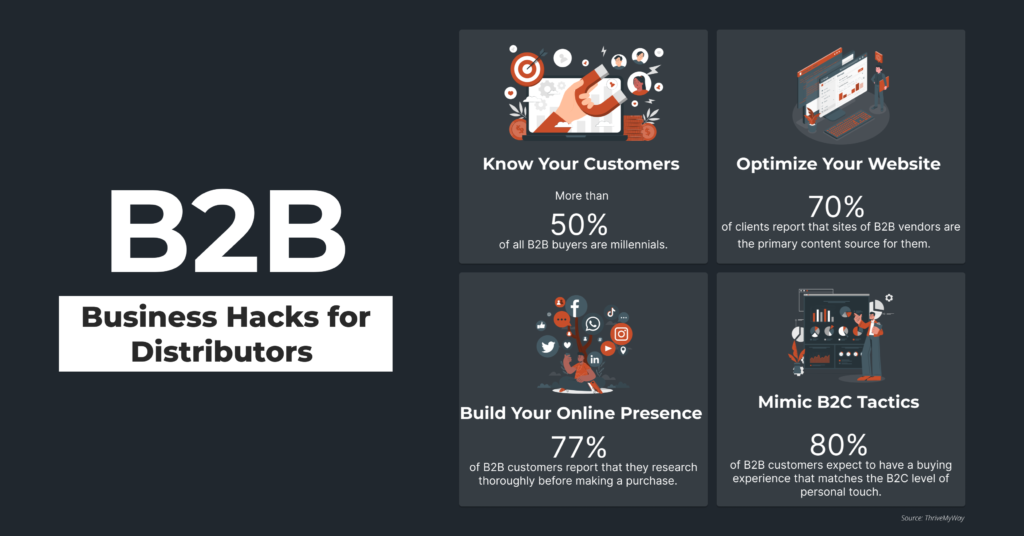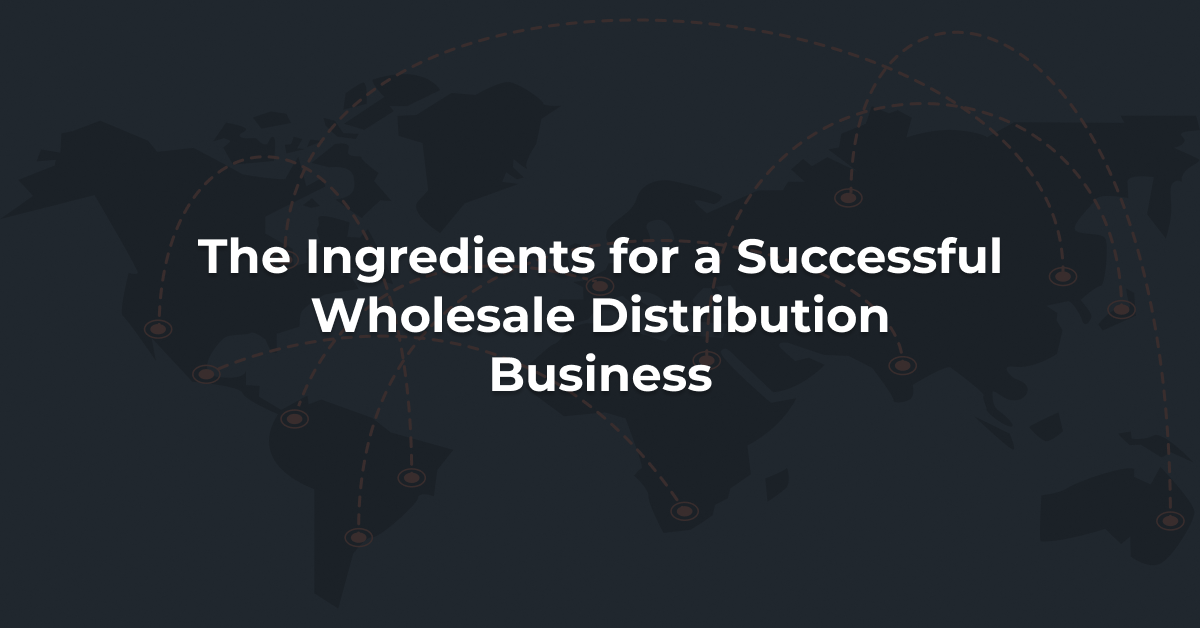As a wholesale distributor, you are in the business of supplying other businesses with the products they need to operate. Success in this industry requires a delicate balance of maintaining enough inventory to meet customer demand, while also keeping costs low enough to remain profitable.
In order to successfully navigate the wholesale distribution landscape, there are a few key ingredients you need:
A detailed understanding of your target market: Who are your customers? What do they need? When do they need it? Understanding the answers to these questions is essential to stocking the right inventory and meeting customer demand.
A well-developed distribution network: In order to get your products to your customers in a timely and cost-effective manner, you need to have a distribution network in place. This means having a network of warehouses, trucks, and other resources in place to get your products where they need to go.
Strong relationships with suppliers: In order to maintain a steady supply of inventory, you need to have strong relationships with your suppliers. This way, you can be confident that you will have the products you need, when you need them.
If you have these key ingredients in place, you will be well on your way to success in the wholesale distribution
Contents
Defining Wholesale Distribution & What it Entails

Wholesale distribution is the process of selling goods to retailers, businesses, or other organizations. It typically involves the sale of products in bulk, at a discounted price. In order to be successful, wholesale distributors must be able to find and sell products that are in demand, at a price that is competitive. In a nutshell, wholesale distributors play an important role in the supply chain by providing a link between manufacturers and retailers. They purchase products from manufacturers and then resell them to retailers. Moreover, they typically have a large inventory of products and a wide network of contacts. So they must be able to effectively manage their inventory and keep up with trends in the market. The most successful wholesale distributors are those with seamless integration for wholesale distributors that are able to offer a wide range of products and services, and that have a good understanding of the needs of their customers.
Read More: How Can Wholesale Distributors Differentiate their Businesses in the Age of Amazon?
The Five Types of Wholesale Distribution Strategies
1. Product mix strategy: This is when a wholesaler offers a variety of products within a certain product category. For example, a wholesaler who specializes in office supplies may offer a variety of items such as paper, pens, pencils, staplers, etc.
2. Market coverage strategy: This is when a wholesaler targets a specific market niche or segment. For example, a wholesaler may target small businesses or home-based businesses.
3. Channel coverage strategy: This is when a wholesaler offers products through multiple channels. For example, a wholesaler may sell products through brick-and-mortar stores, online retailers, and catalogs.
4. Service mix strategy: This is when a wholesaler offers a variety of services along with the products they sell. For example, a wholesaler may offer installation services, repair services, or financing options.
5. Pricing strategy: This is when a wholesaler sets their prices based on the value they provide to their customers rather than the cost of the goods they sell. For example, a high-end furniture store may charge more for their furniture than an online retailer because the customer is paying for the convenience and service of shopping in-store.
Recommended Reading: Is Lack Of Innovation Bringing A Growth Gap in Your Distribution Business?
The Five Steps to Building a Successful Wholesale Distribution Business.
1. Find the right products to sell
The first step to having a successful wholesale distribution business is finding the right products to sell. You need to find products that are in demand and that you can get at a good price. You also need to make sure that the products you choose are ones that you are passionate about and that you know something about.
2. Find the right suppliers.
The second step is finding the right suppliers for your chosen products. You need to find suppliers who are reliable and who can provide you with good quality products at a reasonable price. You also need to make sure that your chosen supplier has a good reputation and is someone you can trust.
3. Choose the right type of distribution channel
The third step is choosing the right type of distribution channel for your business. There are three main types of distribution channels: direct, indirect, and hybrid. You need to choose the one that best suits your products, your business, and your customers’ needs.
4. Control inventory levels
Successful inventory management involves several different factors, the first of which is keeping exactly enough inventory. Even if it is your responsibility to sell your goods in large quantities, having too much inventory on hand may hurt your company’s profits.
To make sure you don’t hold any stock longer than you need to or for no reason at all, you must pay close attention to inventory estimates including recorder levels, lead times, and security of your product. You can much more successfully track your orders across channels by using a solid inventory management system.
5. Invest in B2B eCommerce to Ensure Fast Order Fulfillment

The demand for quick and effective fulfillment procedures has increased as more and more B2B businesses enter the digital realm. Millennials are driving this need in a post-Amazon future because 73% of them are now participating in the B2B buying process. Customers’ expectations of availability around-the-clock in the workplace are rising as they become accustomed to the convenience of online ordering in their personal life as consumers. Businesses that can embrace omnichannel strategies (by enabling clients to place orders through the sales representative, online, or on a mobile device) are already reaping benefits. Those who don’t follow these instructions will fall behind.
According to Digital Commerce 360, in 2021, online sales on B2B ecommerce sites, log-in portals and marketplaces increased 17.8% to $1.63 trillion. Statista data suggests that the North American B2B ecommerce market will surpass $4,600 billion by 2025.
Here are some top eCommerce trends you must look in 2022:
- 36.6% of distributors claim upgrading old systems will be a big difficulty in 2022. However, it’s important to make sure you have the appropriate systems in place if you want to provide your new and existing clients a better, more B2C-like experience.
- Finding products is one of the biggest problems B2B internet shoppers face today. Even if they can locate the items, they have trouble locating the most recent information. And there are several approaches for B2Bs to address this problem. Product information management (PIM) software is one of them. PIMs are advantageous because they gather, manage, enrich, and disseminate product information across channels, including your mobile app or e-commerce storefront as well as social sales platforms, markets, and even advertising networks.
- B2Bs also have the option of using back-office technology, which may assist in automating laborious operations. For instance, a lot of B2B companies utilize spreadsheets for inventory or product information. However, you may consolidate all of your catalog information in one location that is connected to your website so that updates and changes appear in real time by connecting the appropriate back-office system, such as an ERP and integrating your ERP with other technology stacks allow you to build an omnichannel eCommerce system.
Similar Reading: 7 Ways Distributors Can Boost Profitability: By Simplifying Their Commerce
5. Develop a marketing plan
The fourth step is developing a marketing plan for your business. A well-crafted marketing plan is critical for any successful wholesale distribution business. It provides a roadmap for how the business will operate, what products or services it will offer, what markets it will target, and how it will generate profits.
This plan should include how you are going to promote your products and how you are going to reach your target market. It should also include what kind of pricing strategy you are going to use and what kind of promotions you are going to offer.
6. Prioritize Active Sales Territory Management
Ensuring that your sales representatives are investing the proper amount of time in the appropriate accounts is the main goal of territory management. Many wholesale distributors fail to track sales performance, segment consumers properly, and enhance sales prospecting strategies.
7. Creating a customer-centric culture
Research has found that 50% of B2B buyers identified improved personalization as a key feature when searching for online suppliers with whom to build relationships, with consumers spending 48% more when their experience is personalized.
A customer-centric culture is one where the customer is always top-of-mind and where decisions are made with the customer in mind. To create a customer-centric culture, start by making sure your team understands the customer’s needs and wants. Then, build processes and systems that put the customer first. Finally, always be looking for ways to improve the customer experience.
8. Build a strong team of employees
The fifth and final step is building a strong team of employees who believe in your vision and who are committed to helping you achieve your goals. A strong team of employees is key to any successful business, but especially important in wholesale distribution. Because your business is handling physical goods that need to be stored, sorted, and shipped out, you’ll need a dedicated, hard-working staff to keep things running smoothly.
Relevant Reaading: eCommerce Development for Distributors: Preparing For Best Results

Kickstart Your Digital Journey to Futureproof Your Distribution Business
The wholesale distribution business is a complex and competitive industry. To be successful, wholesale distributors must have a deep understanding of the different types of distribution, the various channels available to them, and the key characteristics of a successful operation. Additionally, they must carefully craft their distribution strategy and execute it flawlessly.
At DCKAP, we help distributors looking for digital transition by providing them with eCommerce services & technology stack to diversify their distribution across omnichannels. Get in touch with us today.




